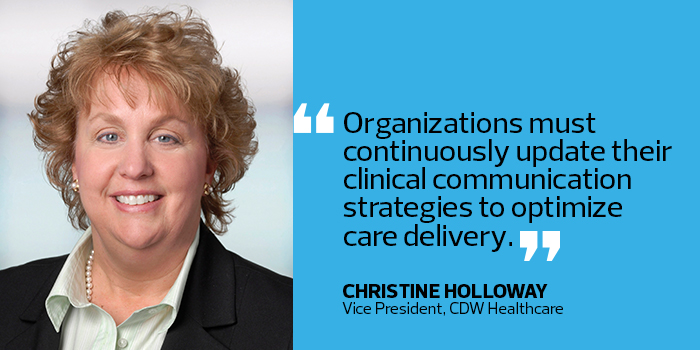Providers Need to Listen, Learn and Adapt to Change for Clinical Communication Success
Think about how clinicians and staff at your organization communicate with each other. Is it easy and efficient, or fraught with complications?
A recent survey conducted by Spyglass Consulting Group finds that many clinicians today are overwhelmed by communication challenges, from outdated overhead paging and traditional pager systems to continuous device alerts and a plethora of incoming voice and text solutions. Respondents also say that EHR-based messaging tools often are poorly designed and fail to integrate within their regular workflow.
Additionally, 80 percent of hospitals surveyed by technology vendor Imprivata have expressed concern about the difficulties associated with communicating and working with members of multidisciplinary teams.
Collaboration among healthcare professionals, particularly as it relates to patient care, should not be this burdensome.
SIGN UP: Get more news from the HealthTech newsletter in your inbox every two weeks!
Update Your IT Arsenal to Meet Today's Care Challenges
Many organizations are taking steps to avoid those pitfalls. Take Parkland Health & Hospital System in Dallas: Following a move to an 862-bed, 2.1 million-square-foot facility a few years ago, the health system updated its arsenal of mobile tools, including new hardware and cloud-based solutions.
Meanwhile, Mary Washington Healthcare in Fredericksburg, Va., transitioned more than 1,000 clinicians last year to a secure text messaging platform. The move helped to streamline what previously had been a multistep communications process that was time-consuming for users. Chief Medical Information Officer David Yi says that the effort has made collaboration among his staff “much faster and more effective.”

According to Spyglass, 90 percent of the hospitals it surveyed are making “enterprisewide investments in smartphones and secure mobile communications platforms.” Seventy-three percent of respondents say they have already developed or are developing mobile-specific strategies to that end.
Organizations Turn to Telehealth to Improve Resources
Providers also increasingly are leveraging telehealth technology to optimize collaboration between clinicians and improve the timeliness and quality of care. According to a survey published last fall by law firm Foley & Lardner, 75 percent of respondents currently offer or plan to offer telehealth services. In the same survey three years earlier, 87 percent of respondents said they did not expect a majority of their patients would be using any of their organization’s telehealth services by 2017.
Companies such as Access Physicians and Avera eCARE both offer remote support to healthcare organizations. Both help rural facilities care for patients, while also providing clinicians the opportunity to learn new procedures by working alongside remote specialists. They also provide intensive care unit, emergency room and hospitalist services to care organizations throughout multiple states.
Additionally, Project ECHO (Extension for Community Healthcare Outcomes) connects physicians with one another via video technologies with a goal of training primary care clinicians to provide specialty care services.
Organizations must continuously update their clinical communication strategies to optimize care delivery.
Constant Updates Keep Care Team Communication Fresh
According to research published in JAMA Internal Medicine, better communication between healthcare teams could help to greatly reduce hospital readmissions.
It all starts at the top with engaged and attentive leadership and good planning. Listen to your clinicians and staff to learn about their needs and what tools and strategies could be most effective.
Including end users in the process of a solution deployment will likely help reduce pushback and improve uptake, and, more important, the quality of patient care.









